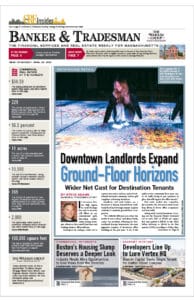
Bernice Ross
Increased interest rates, soaring inflation and lack of inventory are exerting downward pressure on prices as the market continues to sputter in other parts of the country. How prepared are you to thrive in what could become tomorrow’s housing market?
A buyers’ market where the prices are declining is the worst possible market in which to be a commissioned salesperson. Price deflation is bad for everyone. Buyers are reluctant to purchase because they fear that prices will decrease further. Sellers are unable to sell, which results in more foreclosures. Lenders end up taking back more property and brokers end up closing fewer transactions.
Massachusetts’ market isn’t there right now thanks to its impossibly low inventory levels. But if we wind up in a declining market, you’ll want to be prepared.
Price Below the Comps
Declining prices make obtaining an accurate comparative market analysis difficult. For example, assume that a seller’s property is currently worth $400,000 and they decide to list it for $420,000. If property is declining at an annual rate of 8 percent per year ($33,600) then the seller’s property 180 days ($16,800) from now is only worth $383,200.
If they reduce their list price to $410,000, they’re now overpriced by $26,800 rather than $20,000. If the property didn’t sell when it was priced at $20,000 over market, then it’s even less like to sell when it is $26,800 over the market value, especially if prices are continuing to fall.
To avoid this trap, list the property below the comparable sales. The reason for this is simple – today’s comparable sales represent what the prices were 60 to 90 days ago. If the market is declining, then the property is actually worth less than the comparable sales suggest.
Persuading your sellers to be realistic is challenging in any market. This is especially true when the market has been very good and is now transitioning into a buyer’s market. As a result, sellers often want to “test the market.” This is a huge mistake as you can see from the example above.
Many sellers mistakenly believe that the initial activity on their property will continue throughout the listing period.
Nothing could be further from the truth. When they first list their property, there is pent-up demand among the current buyers who haven’t found a property. Once this initial surge ceases, showings will be limited to new buyers coming into the marketplace. Missing this initial “honeymoon period,” which normally lasts the first 21 days a property is listed, usually results in longer market time and a substantially lower price. Do everything within your power to keep sellers from making this costly mistake.
Price Cuts Needs Chainsaws
When property values are declining, reducing the price to the current market value is not sufficient. Instead, you must be slightly below market value to sell the property. To persuade the sellers about the wisdom of this approach, show them how much they lose each month they hold their property.
Here’s how this works. Assume that a seller is paying $3,000 per month in principal, interest, taxes and insurance (PITI) and that the prices are decreasing by $1,000 per month. In this scenario, the actual cost to the seller of not being accurately priced is $4,000 per month.
In a declining market, many people are selling because they must. It may be a divorce, financial difficulties, a job transfer or some other event where the seller has no choice. An important part of providing the seller with excellent service is to understand their motivation.
While sellers’ markets are difficult for buyers because prices are constantly climbing, buyers’ markets are tough on sellers because prices are declining. If the sellers have to sell and are reluctant to accept a reasonable offer, you can ask, “Which is more important, getting on with your life or waiting for the real estate market to improve?”
If the sellers are purchasing a more expensive home, remind them that they will be making additional money on the deal. For example, the owner of a home worth $300,000 who experiences a 5 percent price decline will see a $15,000 reduction in value. If that same individual is purchasing a $600,000 home, that home will experience a $30,000 reduction in value. Thus, the seller comes out $15,000 ahead. In fact, the higher price ranges usually experience greater drops than entry level homes.
Helping your clients understand the psychology of a changing market will make the job of selling their home much easier. More importantly, it can save your clients plenty of money while also helping you to make sure your commission income stays strong.
Bernice Ross is a nationally syndicated columnist, author, trainer and speaker on real estate topics. She can be reached at bernice@realestatecoach.com.





